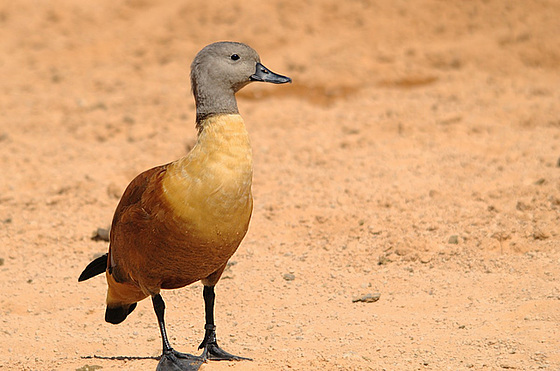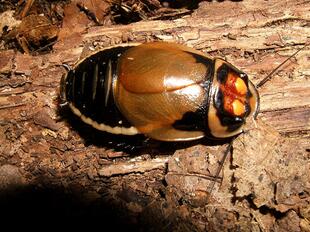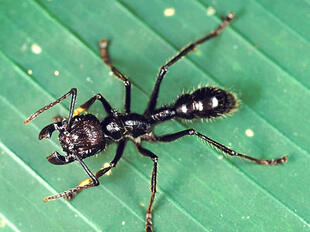
South African shelduck, or Cape shelduck(Tadorna cana)
Phylum —chordata
Class — aves
Order — anseriformes
Family — anatidae
Genus –tadorna
Appearance
The male has a grey head and upper neck, a black bill, a buff lower neck and breast. The body is chestnut brown with black with white and green wings. The legs and feet are dark grey.The female is similar to the male except it has a white face with dark brown head and neck. Size – 640 mm.
Habitat
This bird breeds mainly in Namibia and South Africa. In the austral winter, many birds move north-east from the breeding range to favored moulting grounds, where sizable concentrations occur.
Diet
South African shelducks feed mainly on seeds, grasses and algae, but may also take crustaceans and insect larvae.
Reproduction
For part of the year these birds congregate in flocks, but separate into pairs for the breeding season. The female will lay between 7 and 15 dull white eggs, which she will incubate for around 30 days.
Incaptivity
Lifespan -up to 20 years.
Shelducks perfectly adapt to life in aviaries, grow well and regularly give healthy offspring, which are selflessly taken care of by both parents. The main difficulty faced by beginners in breeding of these birds is their excessive aggressiveness during the breeding season, intolerance of the presence of birds of any kind in the breeding territory. A male guarding a clutch of a female or brood can pounce on both a large bird of prey and a predatory mammal and a human.
At the same time, a couple with their own brood often takes other birds` chicks under their protection, and sometimes even takes them away from their parents. Young birds under 2 years of age who have not reached sexual maturity are more tolerant to life in a large flock. Adult birds get along peacefully with other representatives of waterfowl during the molting period at the end of the nesting period. But, in addition to seasonally aggressiveness when the male defending its territory can kill smaller ducks and even geese, we need to understand that bird keeping in mixed flocks can be the reason for hybridization with any of the members of the genus Tadorna, as well as geese, breasted geese and domestic ducks.
Large aviaries as a place for seasonal keeping of a small group of adult immature or molting birds should be much more spacious than for any other waterfowl. The minimum size of the enclosure for a pair of shelduckscannot be less than 100 square meters. For good growth, regular reproduction and preservation of the brood population, it is necessary to provide the shelducks with the opportunity to graze on a large area with low grass. It is recommended to equip a large, shallow pond.
During the long frosty period, ducks need dry enclosed spaces. The room temperature should be at least 10 оС. If birds are outsideduring the cold weather for a long period of time they have frostbite of the paws.
In captivity, it is important for shelducks to have a possibility of grazing on grass. The natural herbal diet is supplemented with special compound feeds and bread. In winter, the grain diet consists of wheat, oats, lentils, peas, crushed corn is supplemented with finely chopped peelings of vegetables such as potatoes, carrots, cabbage and others.
Hatched ducklings are fed with industrial starter feed. Duckweed, a lot of chopped greens − lettuce and spinach, insects and earthworms are useful for the growth of chicks. Providing access to low-grass pasture from an early age guarantees the brood rapid growth and maximum survival. A shallow container with clean drinking water, which is replaced as it becomes contaminated, but at least once or twice a day, should always be in the place of feeding the bird.
 Russian
Russian
 English
English
























